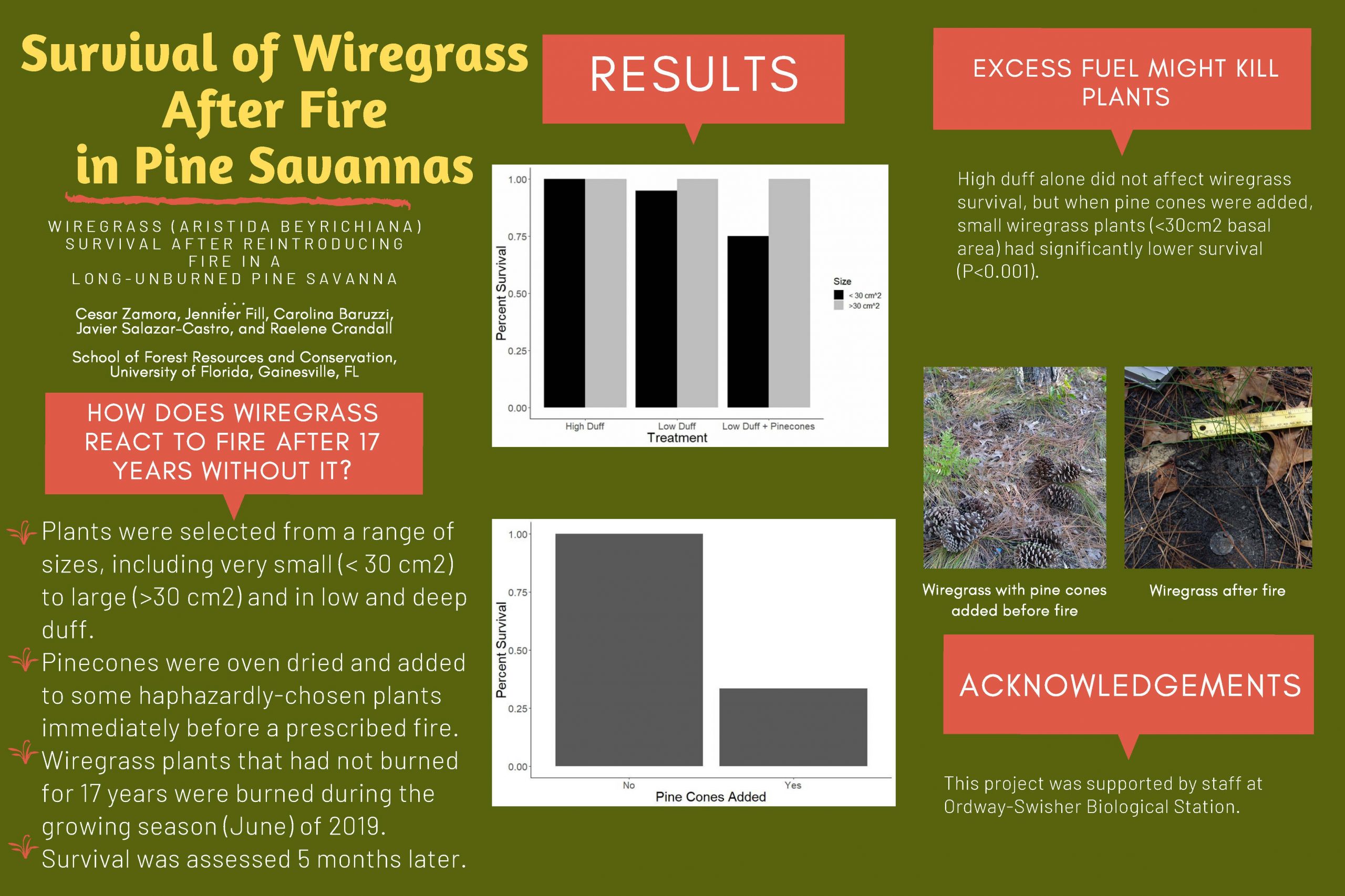About Cesar's Experience
Cesar Zamora participated in the 2020 UF/IFAS Summer Undergraduate Internship Program coordinated by the UF/IFAS Research Dean's Office. The program is a collaborative effort between the College of Agricultural and Life Sciences (CALS) and The Florida Agricultural Experiment Station (FAES). Interns are supervised by a faculty member conducting one of nearly 500 active research projects across the state. Each project has specific goals and objectives that the intern will help achieve during the length of their internship experience. Typically, the internship is catered towards exposing students to research who have not previously held a research position.
Cesar worked under the supervision of assistant professor Raelene Crandall and postdoctoral research associate Jennifer Fill. Their research was conducted at the Ordway-Swisher Biological Station (OSBS) in Melrose, FL using seed funding provided by the UF/IFAS Research Dean's Office.
His contributions were so significant that he was included as a co-author on a peer-reviewed journal article published in PLoS ONE.
Published Work
Cesar worked with Drs. Crandall, Fill and others to examine the survival and fecundity of wiregrass after a reintroduction fire in a long-unburned site at OSBS. They found that wiregrass flowered and produced viable seeds after nearly 20 years of fire suppression and even under heavy fuels, which is favorable news for restoration.
This work was published in PLoS ONE, a remarkable accomplishment for an undergraduate student. Click here for the article.
Abstract
Wiregrass (Aristida beyrichiana) is a keystone species in longleaf pine (Pinus palustris) savannas of the southeastern USA. It fuels frequent, ground layer fires known to be essential for maintaining ecosystem function and diversity. Thus, an understanding of the factors that drive wiregrass survival should help explain community dynamics in pine savannas and inform restoration of long unburned sites. As time-since-fire increases in pine savannas, decomposing leaf litter (“duff”) begins to accumulate around plants and have been shown to increase soil heating and mortality of some species, including pines. We investigated whether duff accumulation and wiregrass size affected its survival by monitoring individuals after a prescribed fire in a fire-neglected research unit at Ordway-Swisher Biological Station near Hawthorne, FL. Individual plants were assigned to three treatments: low duff, high duff, and low duff with additional fuels added (3 pine cones). We found that plants had high survival unless they were small (<30 cm2 basal area) and had pine cones added. These results suggest that wiregrass can survive even when fuel loading and fire intensity are high. This is positive news for land managers concerned about grass mortality when reintroducing fire into long-unburned pine savanna sites.


